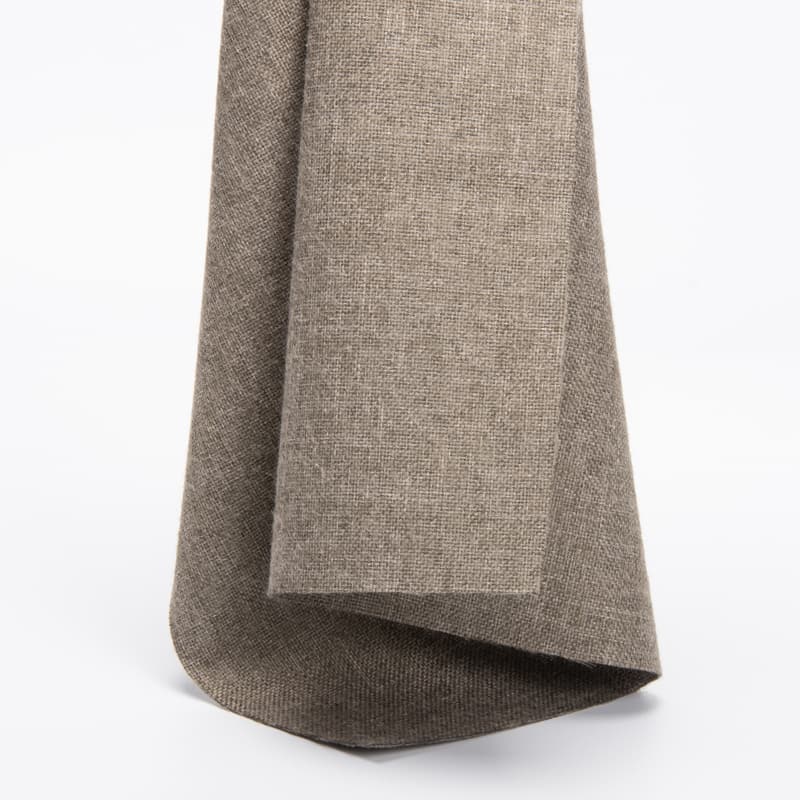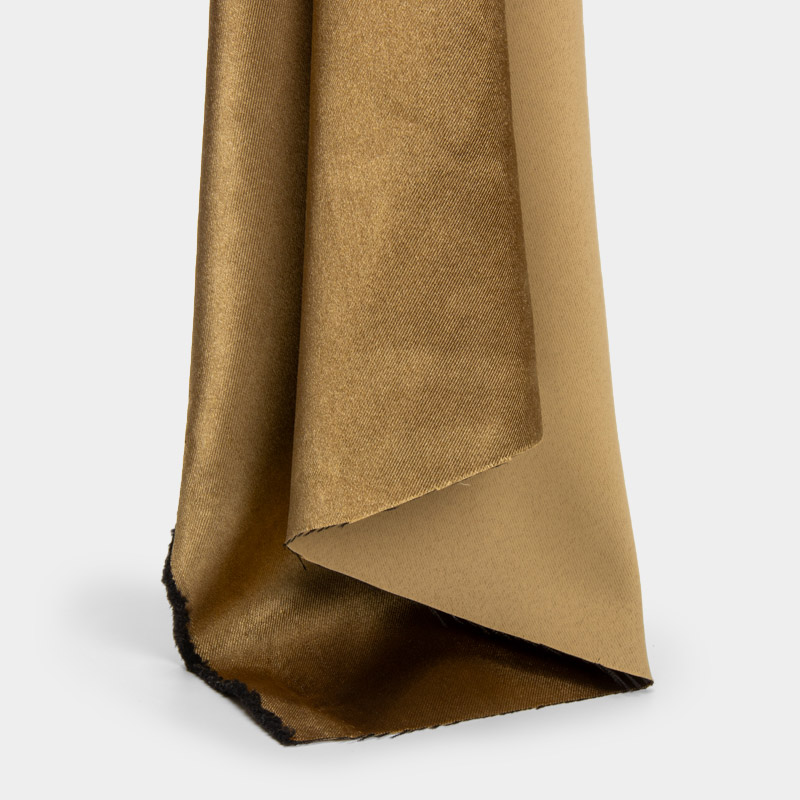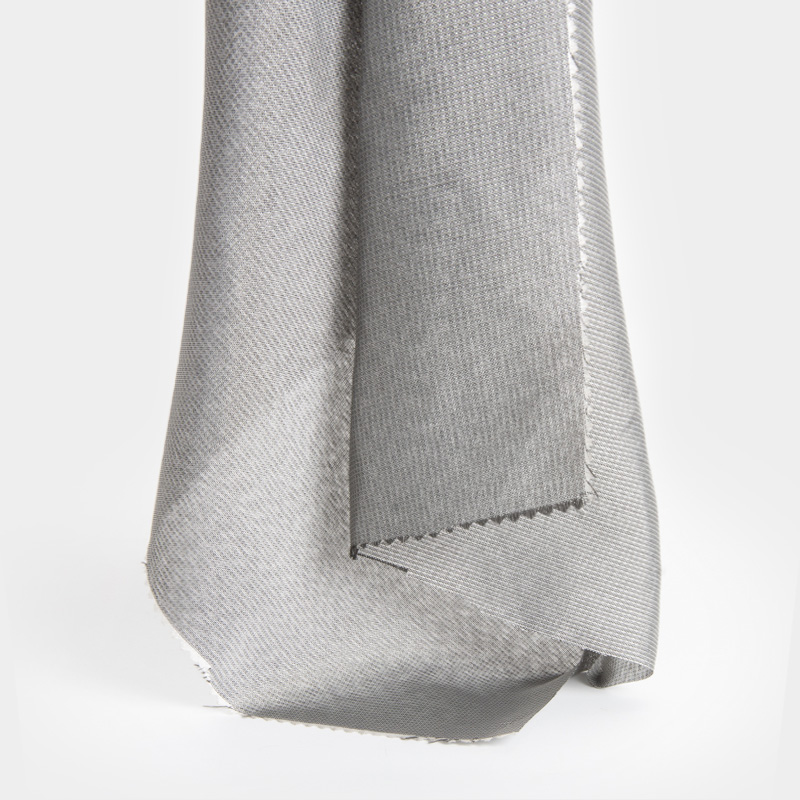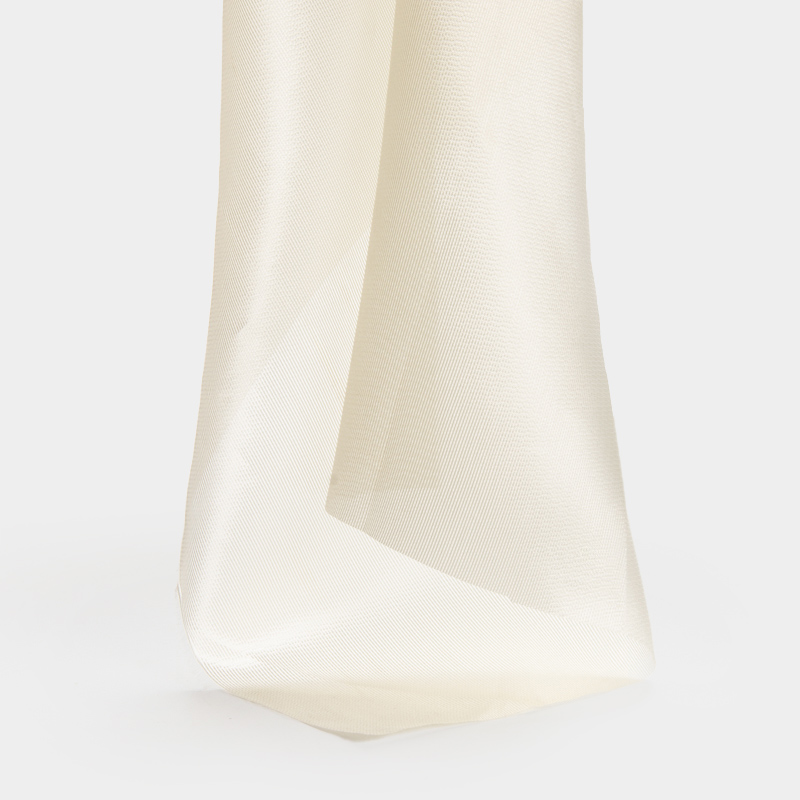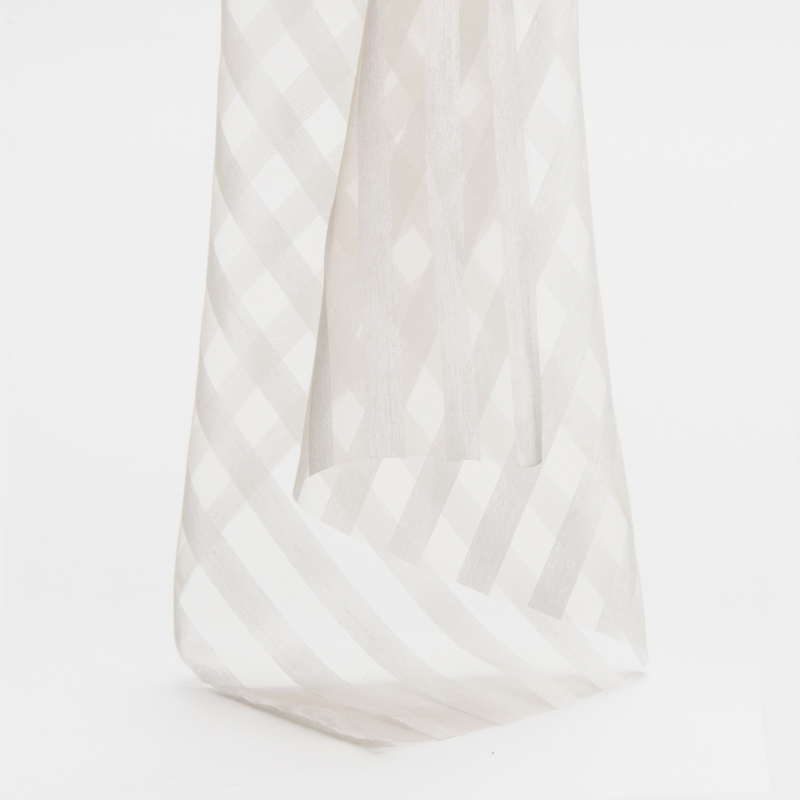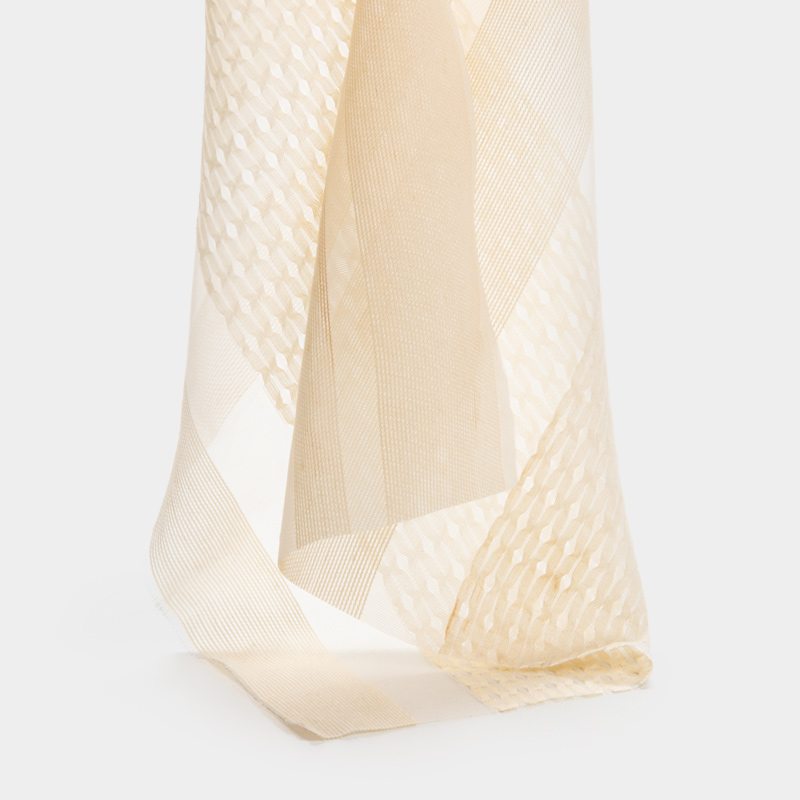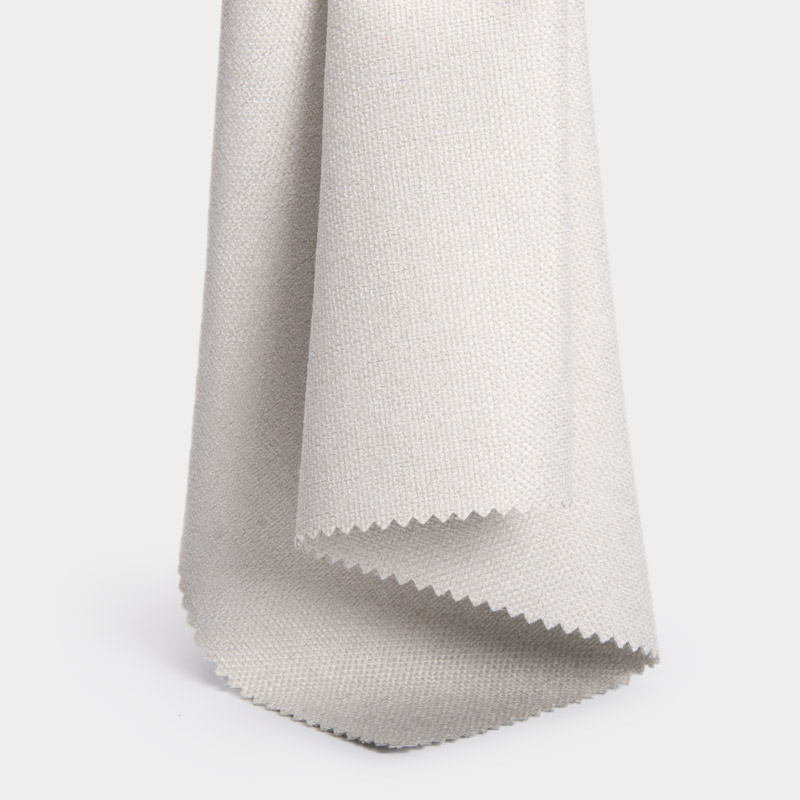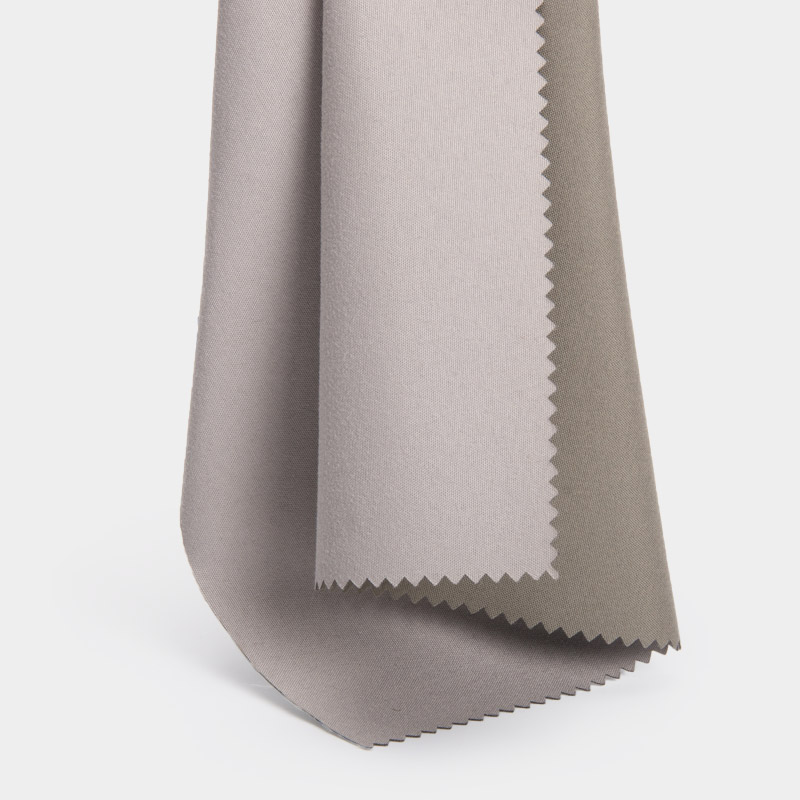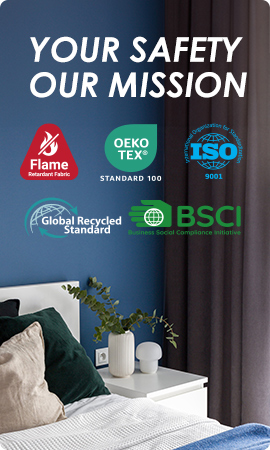5 Tips to Choose the Right Medical Curtain Fabric: Key Considerations for Healthcare Facilities

Tip 1: Consider Fire Compliance of Flame-Retardant Fabrics
Need to Pass Flame-Retardancy Standards: NFPA701
When selecting the appropriate medical curtain fabric, fire compliance is a paramount consideration. Flame-retardant fabrics are designed to meet stringent safety regulations, such as the NFPA701 standard. This standard evaluates the flammability of textiles and films to ensure they do not contribute significantly to fire spread. Medical environments require materials that minimize fire risks, making compliance with NFPA701 essential for safety and regulatory adherence.
NFPA701 passing criteria
| Test Method | Afterflame Time | Char Length | Residue Requirements | Applicable Materials |
| Method 1 | ≤2 seconds | ≤6 inches (152 mm) | No flaming debris, no secondary ignition | Single-layer fabrics, non-vinyl coated |
| Method 2 | ≤1 second | ≤4 inches (102 mm) | Residue remains intact, no sustained burning | Heavy fabrics (>700g/m²), vinyl-coated films |
Need Chemical Resistance Compliance: ASTM/ISO Standards for Medical Textiles
In addition to flame resistance, medical curtain fabrics must also demonstrate chemical resistance. This is particularly important in healthcare settings where exposure to disinfectants and cleaning agents is frequent. Compliance with ASTM or ISO standards ensures that the fabric can withstand chemical exposure without degrading or losing its protective properties. These standards provide benchmarks for durability and performance under harsh conditions, making them critical for maintaining hygiene and longevity in medical environments.
Introduction to Smoke Density Thresholds Based on ASTM E662 Test Data
Smoke density is another vital factor in evaluating flame-retardant fabrics. The ASTM E662 test measures the optical density of smoke produced by burning materials. Fabrics that produce less smoke are preferred in medical settings as they reduce visibility hazards during emergencies and lower the risk of respiratory complications for patients and staff.
Tip 2: Evaluate the Antimicrobial Properties of Flame-Retardant Fabrics
Features of Antimicrobial Coated Fabrics (FRAntiBact™)
Antimicrobial properties are increasingly sought after in medical curtain fabrics. Innovations like FRAntiBact™ coatings offer dual benefits by combining flame retardancy with antimicrobial protection. These coatings inhibit bacterial growth on fabric surfaces, reducing the risk of cross-contamination in healthcare facilities. The integration of such advanced technologies enhances both safety and hygiene, making them an ideal choice for hospitals and clinics.
Benefits of Antimicrobial Medical Curtains
Medical curtains with antimicrobial properties provide several advantages. They help maintain a sterile environment by actively reducing microbial presence on their surfaces. This feature is particularly beneficial in areas prone to high patient turnover or infection risks, such as emergency rooms or intensive care units. Additionally, antimicrobial curtains contribute to cost savings by minimizing the frequency of fabric replacement due to contamination-related wear.
Tip 3: Assess Durability and Maintenance Costs of Flame-Retardant Fabrics
Indicators of Durability
Washing Cycle Performance
Durability is a key factor when choosing flame-retardant fabrics for medical curtains. Frequent washing cycles are a standard requirement in healthcare settings due to strict hygiene protocols. Fabrics that retain their flame-retardant and antimicrobial properties after multiple washes demonstrate superior quality. Ensuring that the material remains effective over time reduces long-term maintenance costs and enhances overall efficiency.
Abrasion Resistance
Abrasion resistance is another critical indicator of durability. Medical curtains are subject to constant movement and handling, which can lead to wear and tear over time. Selecting fabrics with high abrasion resistance ensures they can withstand daily use without compromising their structural integrity or safety features.
Standards for Low-Cost and Reusable Materials
Insights from a 5-Year Cost Comparison
| Year | Average Price (USD/m) | Key Influencing Factors |
| 2020 | 4.50–5.00 | Rising demand for hospital safety standards; initial adoption of NFPA 701-certified fabrics |
| 2021 | 4.80–5.20 | Supply chain disruptions due to COVID-19; increased raw material costs |
| 2022 | 5.00–5.50 | Stricter fire safety regulations (e.g., GB20286-2006 updates); higher production costs for wash-durable fabrics |
| 2023 | 4.6 | Direct price listed: ¥33.00/m (~$4.60 USD at 2023 exchange rates) for 280cm-wide polyester fabric |
| 2024 | 4.70–5.00 | Stabilized supply chains; competitive pricing among Chinese manufacturers |
Cost-effectiveness is an essential consideration for healthcare facilities operating within budget constraints. A comprehensive 5-year cost comparison reveals that investing in high-quality flame-retardant fabrics pays off in the long term. While initial costs may be higher, these materials offer extended lifespans, reduced replacement frequency, and lower maintenance expenses. Reusable materials further enhance sustainability efforts by minimizing waste generation in medical environments.
By carefully evaluating fire compliance, antimicrobial properties, durability indicators, and cost considerations, healthcare facilities can select medical curtain fabrics that meet their unique needs while ensuring safety, hygiene, and cost efficiency.
Tip 4: Consider the Environmental Impact of Flame-Retardant Fabrics
GRSFRTex™ and Global Recycled Standard Certification
The environmental impact of flame-retardant fabrics is a critical factor to consider when selecting medical curtain materials. Modern innovations like GRSFRTex™ have revolutionized the industry by offering sustainable options. GRSFRTex™ fabrics are designed to meet the Global Recycled Standard (GRS) certification, ensuring that the materials used are eco-friendly and sourced responsibly. This certification guarantees that the production process adheres to strict environmental and social criteria, including reduced energy consumption and minimized waste generation.
By choosing fabrics with GRS certification, healthcare facilities can contribute to global sustainability efforts. These fabrics not only provide the necessary flame-retardant properties but also align with eco-conscious practices, making them an ideal choice for environmentally responsible organizations.
Use of Cost-Effective Eco-Friendly Materials
Incorporating cost-effective eco-friendly materials in medical curtain fabrics is another way to address environmental concerns. Sustainable textiles made from recycled or biodegradable fibers reduce the ecological footprint of healthcare facilities. These materials maintain high performance standards while promoting resource conservation. For example, using recycled polyester in flame-retardant curtains minimizes reliance on virgin resources and reduces greenhouse gas emissions associated with fabric production.
Additionally, eco-friendly materials often offer long-term cost benefits. Their durability and reusability lower replacement frequency, translating into financial savings for healthcare institutions. By prioritizing sustainable options, facilities can achieve a balance between environmental responsibility and budgetary efficiency.
Tip 5: Choose a Reliable Flame-Retardant Fabric Supplier
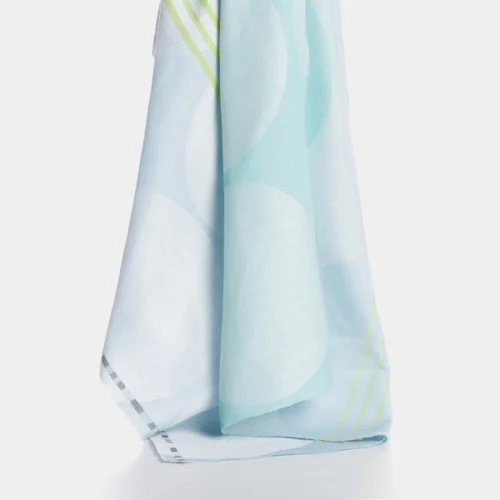
Criteria for Selecting a Trustworthy Supplier (BEGOODTEX)
Production Capacity and Quality Control Systems
When selecting a reliable supplier for flame-retardant medical curtain fabrics, evaluating their production capacity and quality control systems is essential. A trustworthy supplier like BEGOODTEX demonstrates robust manufacturing capabilities to meet high-volume demands without compromising on quality. Their advanced quality control systems ensure that every product of fabric meets stringent safety and performance standards. This consistency is crucial in healthcare environments where patient safety cannot be compromised. If you want to know concrete advantages of BEGOODTEX’s medical curtain, you can check the blog: 5 Key Advantages of Flame Resistant Medical Curtains to know more.
Suppliers with comprehensive quality assurance protocols also provide detailed documentation, such as test reports and certifications, verifying compliance with industry standards like NFPA701 or ASTM guidelines. Partnering with such suppliers ensures that healthcare facilities receive products that meet both regulatory requirements and operational needs.
Summary of Key Product Features: Flame-Retardancy, Eco-Friendliness, Privacy, and Corrosion Resistance
A reliable supplier should offer a range of products with key features tailored to medical environments. High-quality flame-retardant fabrics must combine multiple functionalities to address diverse requirements:
- Flame-Retardancy: Essentialfor meeting fire safety regulations and protecting patients and staff during emergencies.
- Eco-Friendliness: Incorporating sustainable materials aligns with environmental goals while maintaining performance standards.
- Privacy: Medical curtain fabrics should provide effective visual barriers to ensure patient confidentiality.
- Corrosion Resistance: Durability against frequent exposure to cleaning agents enhances longevity and reduces maintenance costs.
Suppliers like BEGOODTEX specialize in offering products that integrate these features seamlessly, making them suitable for demanding healthcare applications.
Advantages of Partnering with a Reliable Supplier
Partnering with a reliable flame-retardant fabric supplier offers several advantages for healthcare facilities. Firstly, it ensures access to high-quality products that comply with all relevant safety and performance standards. Reliable suppliers also provide technical support and customization options tailored to specific requirements, enabling facilities to optimize their operational efficiency.
Moreover, working with reputable suppliers fosters long-term relationships built on trust and reliability. This partnership guarantees consistent product availability even during periods of high demand or supply chain disruptions. Additionally, dependable suppliers often invest in research and development to introduce innovative solutions like antimicrobial coatings or eco-friendly textiles, keeping their clients ahead in terms of technology adoption.
By considering environmental impact alongside supplier reliability criteria such as production capacity, quality control systems, product features, and partnership benefits, healthcare facilities can make informed decisions when choosing medical curtain fabrics that align with their safety standards, operational goals, and sustainability objectives.
FAQ
Q: How often should disposable medical curtains be replaced?
A: Replacement frequency depends on facility protocols and patient turnover. Some manufacturers provide guidelines; for instance, BEGOODTEX suggests a “Disposable Curtains Replacement Frequency Guide” to assist healthcare facilities in determining appropriate intervals.
Q: Are medical curtains flame-retardant?
A: Yes, reputable medical curtains comply with international flame-retardant standards. For example, medical curtains meet standards such as:
BS 5867: Part 2 Type C (British Standard)
NFPA 701: 2015 (American Standard)
AS 2755.2-1985 (Australian Standard)

